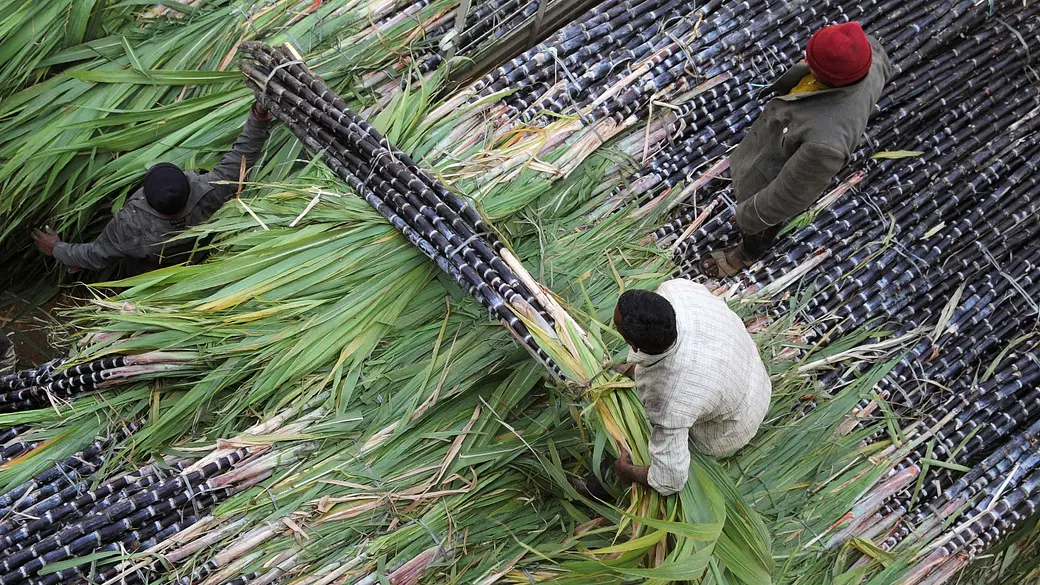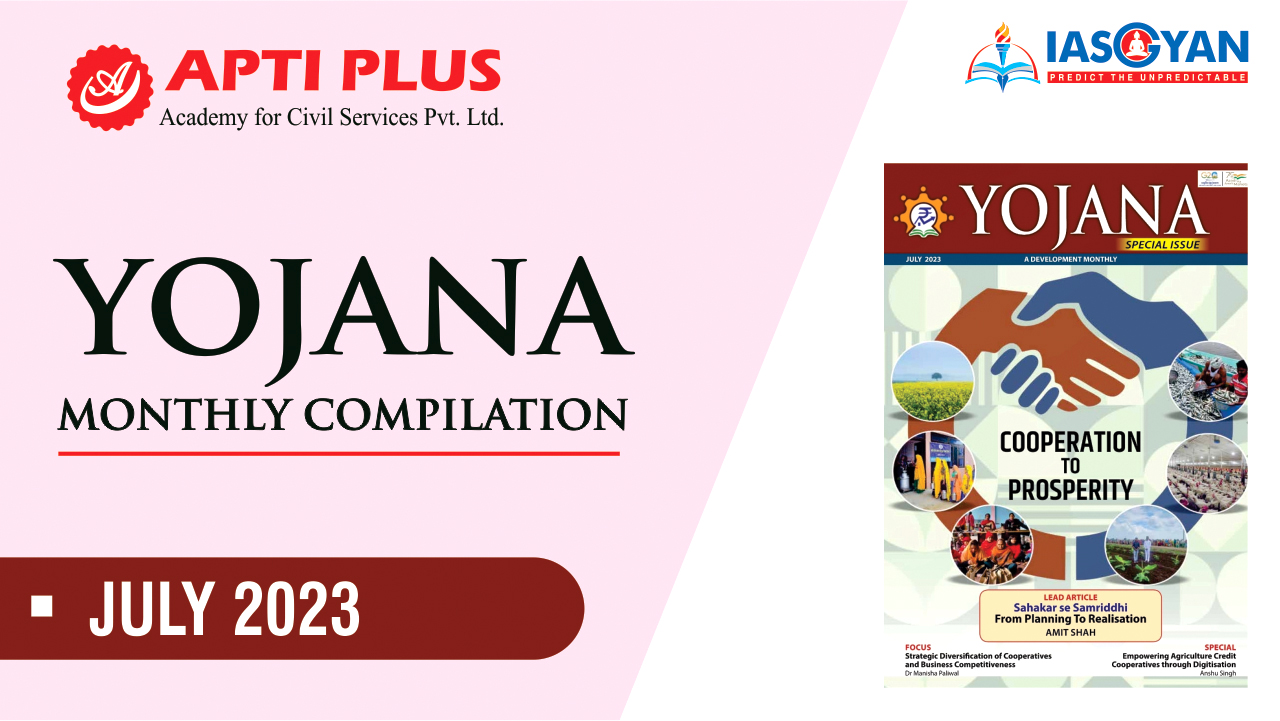Description

Copyright infringement not intended
Context: India became the world's top sugar producer in 2021-2022, breaking a record with 359 lakh tonnes of sugar. However, this achievement has a bitter side: the country is depleting its water resources at a dangerous rate to sustain its sugar production, and this could lead to a major crisis for the sugar sector and the agriculture sector in the near future.
Details
- Sugarcane is a lucrative crop for many farmers in India, and they have been growing it excessively, resulting in a surplus of sugar and high exports. But this practice has a huge cost for the country's groundwater, which is essential for irrigation and drinking. This cost has been largely ignored, but it cannot be ignored any longer. If India does not take urgent and effective measures to reduce its groundwater consumption in the sugar industry, it will face a serious threat to its food security and rural livelihoods.
Excess sugar Production in India
- India consumes more sugar than any other country in the world and therefore needs to produce enough to satisfy its domestic market. However, the reason for the excess production is that government policies and measures encourage farmers to grow more sugarcane.
- The Central government has a fair and remunerative price (FRP) scheme, which guarantees a minimum price that sugar mills have to pay to the sugarcane growers, ensuring that they always make a profit from their crop.
- State governments also provide generous subsidies to promote sugarcane farming. Some critics have said that this is done to gain the support of the farmers, who are a significant voting bloc in rural areas.
- The surplus sugar has resulted in increased exports, reaching a record high of 110 lakh tonnes in 2021-2022. However, this has also attracted complaints from other sugar-producing countries, such as Brazil, Australia, and Guatemala, who accused India of violating the international trade rules by giving excessive export subsidies and domestic support to its farmers, which gave them an unfair advantage in the global sugar market. The World Trade Organisation ruled in favour of the complainants and India lost its appeal.
Efforts made to address this issue
- One of the solutions that the Indian government explored to cope with the excess sugar production was to convert it into ethanol, a natural substance that results from fermenting sugar or sugarcane molasses. Ethanol has various applications in the fields of alcohol, chemicals and cosmetics. It also has environmental benefits when used as a fuel additive in the transport sector, as it lowers the emissions of harmful substances like carbon monoxide and some hydrocarbons from petrol-powered vehicles.
- The government initiated the ethanol-blended petrol (EBP) programme in 2003 to reduce the dependence on crude oil imports and mitigate the greenhouse gas emissions from vehicles using petrol; it has been quite successful. The programme began with a modest objective of achieving a 5% blending rate, but the goal for 2025 is 20%.
- The government also slashed the Goods and Services Tax on ethanol from 18% to 5% in 2021. In the same year, out of the 394 lakh tonnes of total sugar output, around 35 lakh tonnes were used to produce ethanol.

How does sugarcane cultivation impact groundwater?
- The EBP programme has been beneficial for India in terms of reducing its dependence on crude-oil imports and sugar exports, as well as lowering its greenhouse-gas emissions. However, the programme has also led to a serious environmental problem: the over-cultivation of sugarcane. Sugarcane is a cash crop that requires a lot of land and water resources to grow.
- The land use issue of sugarcane has been widely discussed and researched, with some experts suggesting that solar panels would be a more efficient and eco-friendly alternative to sugarcane fields, in terms of net emissions reduction. However, the water use issue of sugarcane has not received enough attention.
- The major sugarcane-producing states in India are Maharashtra, Uttar Pradesh, Karnataka, Gujarat, and Tamil Nadu. Among them, Maharashtra, Uttar Pradesh, and Karnataka produce 85-90% of the country's sugar output. These states have a low rainfall of around 1,000-1,200 mm per year, which is far below the 3,000 mm that sugarcane needs if it relies only on rainwater. Therefore, these states have to extract groundwater to irrigate their sugarcane crops.
- Most of this groundwater comes from confined aquifers, which are layers of water trapped between two layers of rock that are not permeable. To access this water, farmers have to drill borewells through the upper rock layer. This water cannot be replenished by rainwater, so it is a finite resource.
- The water consumption of sugarcane is very high: it takes about 2 lakh litres of groundwater to irrigate one tonne of sugarcane, which produces about 100 kg of sugar. This does not include the water used for industrial processes of sugar-making and -refining. This is a cause for concern: the top sugarcane-growing states are already prone to droughts and groundwater stress. According to a 2022 report by the Central Ground Water Board (CGWB), one-third of its groundwater assessment units in Maharashtra, Uttar Pradesh, and Karnataka were classified as 'semi-critical', 'critical' or 'over-exploited'.
Steps need to be taken
- The environmental impact of producing too much sugar is obvious, but the economic benefits are huge, as it brings in hundreds of billions of rupees every year. So we can't just stop making sugar. A better and more lasting solution would be to look at and fix the incentives that make farmers grow more sugarcane than other crops, resulting in a constant surplus.
- Giving fair and complete subsidies for different crops can help farmers grow a variety of things, as well as spread out the farming, avoid monocultures, and make sure they have a fair income. Having more options for profitable and less water-hungry crops can reduce the pressure on important natural resources.
- Promoting and adopting environmentally friendly ways of growing sugarcane that use less groundwater, such as drip irrigation, to deal with the problem in the long term. In drip irrigation, water drips slowly but right to the roots of the sugarcane plants, using up to 70% less water than the current way of flooding the fields. Drip irrigation is already required in many parts of India (including in the three states), and the government has also given money to farmers to help them set up the systems.
- India needs to spend on overall systems that save and manage water. Working hard to use cleaner methods like collecting rainwater, treating wastewater, and using canals for irrigation, will help save groundwater reservoirs as other sources of water become available for farming. Spending on groundwater research, therefore, needs to be taken seriously.
- As India keeps growing as a global leader in the farming sector, it must make sustainability its main goal.
Conclusion
- India's excessive sugar production is exacerbating groundwater depletion, placing a premium on sustainable water management. The voracious demand for water in sugarcane cultivation raises urgent environmental concerns, necessitating a shift towards responsible farming practices. Balancing agricultural output with water conservation is imperative to secure the nation's water resources and ensure long-term ecological resilience. By promoting efficient irrigation techniques, crop diversification, and policy reforms, India can mitigate this critical challenge, safeguarding both its agricultural productivity and precious water reserves for future generations.
Must-Read Articles:
SUGARCANE: https://www.iasgyan.in/daily-current-affairs/sugarcane
SUGARCANE INDUSTRY: https://www.iasgyan.in/blogs/sugarcane-industry-38
NATIONAL GROUNDWATER MANAGEMENT IMPROVEMENT SCHEME: https://www.iasgyan.in/daily-current-affairs/national-groundwater-management-improvement-scheme
GROUND WATER: https://www.iasgyan.in/daily-current-affairs/ground-water
|
PRACTICE QUESTION
Q. What are the far-reaching impacts of India's excessive sugar production on groundwater reserves, and how is it contributing to the ongoing water crisis? What are the key challenges posed by this phenomenon, both environmentally and socioeconomically? What strategies and interventions can be implemented to address the issue of groundwater depletion caused by sugar production and ensure a more sustainable and responsible use of water resources in the agricultural sector?
|

https://epaper.thehindu.com/ccidist-ws/th/th_delhi/issues/46754/OPS/GG0BJ7JQB.1.png?cropFromPage=true















